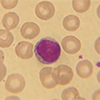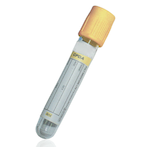Transferrin
Specimen Volume
5-10 mLSample Preparation
Turnaround Time
24 hoursSample Processing In Laboratory
UsualSample Stability
4 ºCGeneral Information
Transferrin is the iron transport protein in serum. It is a glycoprotein consisting of a polypeptide strand with 2 N-glycosidically linked oligosaccharide chains and exists in numerous isoforms. The rate of synthesis of transferrin in the liver depends on the bodies iron requirements and iron reserves. In cases of iron deficiency, transferrin saturation is a sensitive marker of functional iron depletion. Ferritin is depressed when there is a deficiency of stored iron. Total iron binding capacity (TIBC) is calculated from serum transferrin and used to calculate the percentage of iron saturation.
Serum transferrin is elevated in iron deficiency anaemia due to inadequate iron uptake, chronic loss of blood, increased utilisation of iron in late pregnancy or continued use of oral contraceptives. Transferrin is decreased in conditions which cause low protein levels e.g. nephrotic syndrome, chronic renal failure, severe burns, severe liver disease and protein malnutrition. It can also be decreased in inflammatory states and severe illness. In screening for hereditary haemochromatosis, transferrin provides a better indication of the homozygous genotype than ferritin. Transferrin is the best marker for treatment of patients with renal failure with erythropoietin. Transferrin saturation in conjunction with ferritin conclusively predicts the exclusion of iron overloading in patients with chronic liver disease.
Patient Preparation
None
Reference Range
Male:
1-14 yrs 1.86 - 3.88 g/L
>14 - 60 yrs 1.74 - 3.64 g/l
>60 - 80 yrs 1.63 - 3.44 g/L
Female:
1-14 yrs 1.80 - 3.91 g/L
>14 - 60 yrs 1.80 - 3.82 g/l
>60 - 80 yrs 1.73 - 3.60 g/L
Specifications
- EQA Status: NEQAS
- EQAS Scheme: Yes








